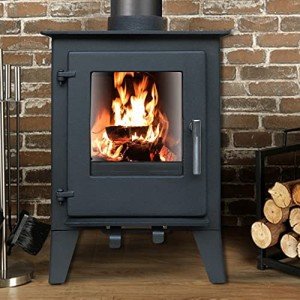8 Tips To Increase Your Multi Fuel Stove Small Game
The Versatility of Multi-Fuel Stoves for Small Spaces
In the ever-evolving landscape of home heating solutions, multi-fuel stoves have actually become a popular choice, especially for those residing in compact home. These stoves, which can burn various types of fuel such as wood, coal, and pellets, provide significant benefits in regards to effectiveness, cost-effectiveness, and environmental friendliness. This short article checks out the benefits of small multi-fuel stoves, their performance, and some frequently asked questions to assist prospective buyers make notified decisions.
The Benefits of Using a Multi-Fuel Stove
1. Versatility
One of the main benefits of a multi-fuel stove is its adaptability. Homeowners can select from numerous kinds of fuel based on schedule, expense, and personal choice. The flexibility of burning wood, coal, or pellets enables more effective and tailored heating.
2. Affordable Heating
In many regions, fuel prices vary considerably. A multi-fuel stove offers the option to change between various fuel sources as market costs alter. For instance, throughout the cooler months, coal might be more affordable than wood, enabling users to adjust their heating method in action to rate shifts.
3. Environmental Considerations
Burning fuels like wood and pellets is frequently considered more sustainable compared to nonrenewable fuel sources. Multi-fuel stoves can make use of renewable options, decreasing carbon footprints. Additionally, many modern multi-fuel stoves are created to burn fuel easily, resulting in fewer toxins and better effectiveness.
4. Space-Saving Design
Small multi-fuel stoves are developed for compact locations, making them perfect for apartments, tiny homes, or small cabins. Many models combine visual design with practical effectiveness, supplying warmth without overwhelming restricted space.
5. Dependable Heating Solutions
Multi-fuel stoves offer a trusted source of heating, especially during power outages. They enable homeowners to keep heat even when electricity is not available, making them a useful option for regions susceptible to extreme weather.
How Does a Multi-Fuel Stove Work?
Multi-fuel stoves function through a combustion chamber where different fuels are burned.
Air Circulation: These stoves are geared up with a system that guarantees optimal air flow, which is critical for accomplishing high-efficiency levels and minimal emissions.
Fuel Selector: Many models feature a fuel selector that allows users to pick the type of fuel being burned, enhancing performance.
Heat Exchangers: Some stoves include heat exchangers to maximize heat output, enabling the stove to warm the space successfully.
Table: Comparison of Common Multi-Fuel Stove Fuels
Fuel Type
Accessibility
Efficiency (%)
Environmental Impact
Cost (per heap)
Wood
High
70-85
Moderate, renewable
₤ 200 – ₤ 300
Coal
Moderate
65-80
Higher emissions
₤ 150 – ₤ 250
Wood Pellets
Moderate
85-90
Low, renewable
₤ 250 – ₤ 400
Biomass
Low
75-90
Low, eco-friendly
Varies extensively
Choosing the Right Multi-Fuel Stove
When picking a small multi-fuel stove, several elements necessitate factor to consider:
Size and Space
- Step the offered space to make sure compatibility.
- Guarantee the stove fits the visual of the room.
Fuel Type
- Think about the main fuel type available in your region.
- Evaluate which fuel uses the best cost-efficiency for your requirements.
Efficiency Rating
- Inspect the stove's performance ranking (the greater, the much better).
- Search for stoves accredited for minimal emissions.
Setup and Ventilation
- Examine installation requirements, consisting of venting requirements.
- Consult experts when necessary to make sure safety and adherence to policies.
Brand Reputation
- Research study brands for reliability and consumer service.
- Read evaluations and seek recommendations from present users.
FAQs About Multi-Fuel Stoves
1. Are multi-fuel stoves safe to use?
Yes, multi-fuel stoves are generally thought about safe when set up and kept according to the maker's guidelines. Regular cleaning and assessments can help avoid problems.
2. Can I utilize different fuels in the exact same stove?
Yes, one of the main benefits of multi-fuel stoves is their capability to burn numerous fuels. Always refer to the producer's instructions relating to compatible fuels.
3. How do Burning Wood In Multi Fuel Stove maintain a multi-fuel stove?
Routine upkeep consists of cleaning up the ash pan, examining flues, and checking seals. Yearly expert examinations are recommended to ensure safe operation.
4. What is the average life expectancy of a multi-fuel stove?
With appropriate maintenance, a sound multi-fuel stove can last anywhere from 15 to 25 years.
5. Do I need an unique chimney for a multi-fuel stove?
The majority of multi-fuel stoves need a chimney that satisfies specific regulations regarding flue size and product. Consult an expert for recommendations customized to your situation.
In conclusion, small multi-fuel stoves use impressive versatility, practical heating services, and energy efficiency, making them an excellent option for small spaces. By comprehending the advantages and considerations connected with multi-fuel stoves, property owners can take pleasure in a comfortable, cost-efficient, and ecologically friendly heating alternative. As urban living continues to trend towards limited area, these stoves represent a forward-thinking technique to conventional heating methods.
